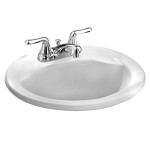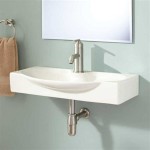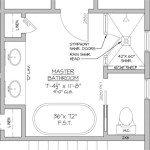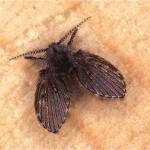What Are The Tiny Black Ants In Your Bathroom?
The presence of tiny black ants in a bathroom is a common household nuisance. These ants, often appearing suddenly and in large numbers, can be frustrating for homeowners. Identifying the specific type of ant and understanding their behavior is crucial for effective control and prevention. This article will delve into the common species of tiny black ants found in bathrooms, the reasons for their presence, and strategies for eliminating and preventing their return.
Several ant species fall under the general description of "tiny black ants." Properly identifying the species is the first step. This is important because different species have different food preferences, nesting habits, and therefore require different control methods. The most common culprits within the bathroom environment include:
*Odorous House Ants:
These ants are very small, typically ranging from 1/16 to 1/8 inch in length. They are dark brown or black and emit a distinct, unpleasant odor when crushed, often described as smelling like rotten coconut. *Pavement Ants:
Slightly larger than odorous house ants, pavement ants are about 1/8 inch long and dark brown to black. They are commonly found nesting under pavement and can enter buildings through cracks in foundations. *Acrobat Ants:
Acrobat ants are about 1/8 inch long and are dark brown or black. They get their name from their habit of raising their abdomens over their heads when disturbed. They nest in damp or decaying wood. *Thief Ants:
As their name suggests, thief ants are known for stealing food from other ant colonies. They are among the smallest ants, only about 1/25 inch long, and are yellowish-brown to light brown in color, often mistaken for other small ant species.While thief ants aren’t strictly “black”, their small size warrants inclusion as they are often mistaken for black ants. The specific ant species can be confirmed by observing their behavior, nesting preferences, and, if necessary, consulting with a pest control professional.
Why Are Tiny Black Ants in the Bathroom?
The presence of ants in a bathroom is not accidental. Ants, like all living creatures, require food, water, and shelter. Bathrooms often provide these necessities, making them attractive habitats. Key factors that draw ants to bathrooms include:
*Water Sources:
Bathrooms are inherently damp environments. Leaky faucets, showerheads, or pipes can create readily available water sources for ants. Even condensation can be enough to sustain a colony. Ants need water to survive, and the bathroom provides consistent access. *Food Sources:
Although bathrooms are not typically thought of as food storage areas, they can contain numerous food sources for ants. Hair, dead skin cells, and even small amounts of toothpaste or soap residue can provide sustenance. Additionally, if food from other areas of the house is brought into the bathroom, it can attract ants. *Shelter and Nesting Sites:
Ants prefer dark, undisturbed areas for nesting. Bathrooms often have cracks and crevices in walls, under sinks, and around plumbing fixtures, which provide ideal nesting locations. Damp wood is particularly attractive to some species like acrobat ants, and bathrooms provide the moisture needed. *Easy Access Points:
Ants can enter a building through tiny cracks in foundations, walls, and around pipes. Bathrooms, with their numerous plumbing penetrations, often provide multiple entry points for ants to gain access.Understanding these factors is vital for developing strategies to prevent ants from entering and thriving in the bathroom. Eliminating water sources, cleaning up food residue, and sealing potential entry points are essential steps.
Identifying and Eliminating Ant Colonies
Effective ant control requires identifying and eliminating the entire colony, not just the visible ants foraging for food. Killing individual ants will only provide temporary relief, as the colony will continue to send out more workers. Therefore, targeting the nest is crucial. Here are some approaches to consider:
*Locating the Nest:
Finding the nest is often challenging, as ants can nest in walls, under floors, or even outdoors. However, observing ant trails can provide clues. Follow the ants to see where they are entering and exiting the bathroom. This may lead to the nest site. Focus on areas where plumbing penetrates the wall or floor, or where there are signs of moisture damage. *Using Bait Systems:
Ant baits are effective because they allow worker ants to carry the poison back to the colony, which then feeds it to the queen and other ants. Boric acid-based baits are a common and relatively safe option. Place the bait near ant trails, but away from areas where children or pets can access them. It's important to let the ants take the bait back to their colony. avoid spraying or killing the ants near the bait, as this will discourage them from feeding. *Direct Treatment of the Nest:
If the nest can be located, direct treatment with an insecticide can be effective. Options include using a spray insecticide or dusting with diatomaceous earth. However, caution should be exercised when using insecticides, especially in areas where children or pets may be present. Diatomaceous earth is a natural, non-toxic option that can dehydrate and kill ants, but it must be applied directly to the nest. *Professional Pest Control:
In cases of severe or persistent infestations, it may be necessary to enlist the help of a professional pest control service. A professional can identify the ant species, locate the nest, and apply appropriate treatments to eliminate the colony. They can also provide advice on preventing future infestations.Effective colony elimination often requires a combination of strategies. Using baits to target the colony while simultaneously sealing entry points and eliminating food and water sources can provide the best results.
Preventing Future Ant Infestations
Once an ant infestation has been eliminated, it is important to take steps to prevent future occurrences. Prevention is often more effective and less costly than dealing with an active infestation. Key preventative measures include:
*Eliminating Water Sources:
Repair any leaky faucets, showerheads, or pipes. Ensure that bathrooms are well-ventilated to reduce humidity and condensation. Wipe up any spills immediately. Consider using a dehumidifier in particularly humid bathrooms. *Cleaning Regularly:
Regularly clean bathroom surfaces, paying particular attention to areas where hair, dead skin cells, or soap residue may accumulate. Sweep or vacuum floors regularly to remove any potential food sources. Clean drains periodically to prevent buildup of organic matter. *Sealing Entry Points:
Seal any cracks or crevices in walls, floors, and around pipes with caulk or sealant. Pay particular attention to areas where plumbing enters the bathroom. Ensure that windows and doors are properly sealed. *Proper Food Storage:
Although bathrooms are not typically food storage areas, avoid bringing food into the bathroom. If food is brought into the bathroom, ensure that it is properly stored and cleaned up immediately after use. *Maintaining a Clean Exterior:
Keep the area around the building clear of debris and vegetation, which can provide harborage for ants. Trim shrubs and trees that touch the building, as these can provide a bridge for ants to enter. *Using Residual Insecticides:
Applying a residual insecticide around the perimeter of the building can help to prevent ants from entering. However, caution should be exercised when using insecticides, and they should be applied according to the manufacturer's instructions.Consistent adherence to these preventative measures can significantly reduce the likelihood of future ant infestations in the bathroom. Regular maintenance and vigilance are key to maintaining an ant-free environment.

Boise Idaho Pest Control Pestcom

How To Stop Ants From Invading Your Bathroom Identification And Prevention Tips Tabor Pest Control

How To Get Rid Of Little Black Ants In Your Bathroom Housekeeping Wonderhowto

How To Get Rid Of Sugar Ants John Moore Services

Boise Idaho Pest Control Pestcom

Niagara Pest Control Why Are There Carpenter Ants In The Bathroom

Why Tiny Ants Have Invaded Your House And What To Do About It

Blog What Are Those Teeny Weenie Ants Delta Optimist

Here S Why Ants Are In Your Room Even If There No Food Pest Pointers

How To Get Rid Of Ants A Complete Guide 2024
Related Posts







